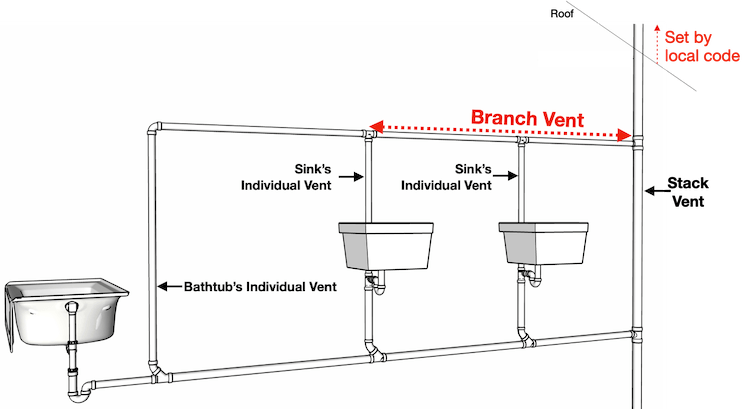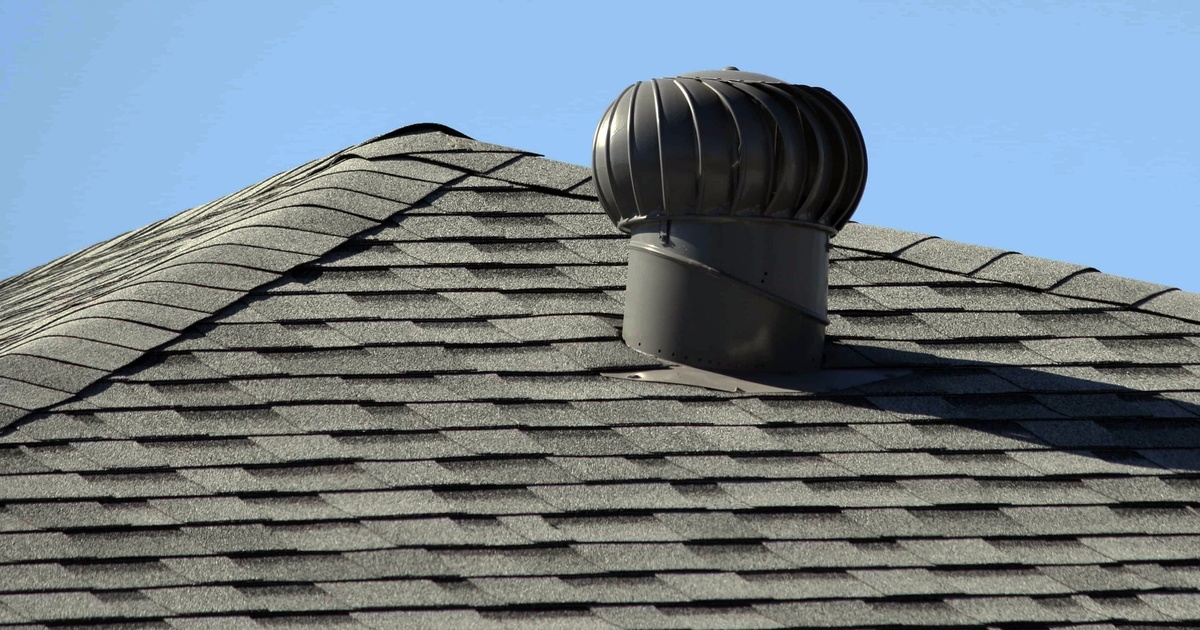Ensuring Adequate Ventilation in Your Plumbing System: The Reason
Ensuring Adequate Ventilation in Your Plumbing System: The Reason
Blog Article
We have discovered the article involving Why Plumbing Air Vents Are Important below on the internet and thought it made good sense to quickly share it with you on this page.

Correct ventilation in plumbing systems is typically ignored, yet it is vital for preserving the capability and security of your home's pipes. Ventilation assists manage air pressure, prevent the accumulation of hazardous gases, and ensure the reliable removal of waste. In this overview, we will certainly explore the relevance of proper pipes ventilation, how it functions, and the benefits it offers your plumbing system.
Just How Ventilation Works in Plumbing Systems
Atmospheric Pressure Regulation
Proper ventilation preserves well balanced atmospheric pressure within the plumbing system. When water moves through pipelines, it displaces air. Without appropriate air flow, this variation can produce negative stress, bring about slow down drains or siphoning of water from catches, which can create undesirable odors to permeate into the home.
Avoiding Sewer Gas Build-up
One of one of the most essential functions of pipes vents is to avoid sewage system gases, such as methane and hydrogen sulfide, from collecting within the home. These gases can pose significant health threats and are very flammable. Vent pipes permit these gases to leave securely outside.
Helping in Waste Elimination
Ventilation assists in the effective elimination of wastewater by preventing airlocks in the drainage system. When air can stream freely through the vents, it permits water and waste to stream smoothly with the pipelines, lowering the danger of blockages and back-ups.
Benefits of Proper Air Flow
Enhanced System Performance
Appropriately ventilated plumbing systems run extra effectively, with less clogs, faster draining, and much less pressure on the pipelines. This performance extends the life expectancy of the pipes system.
Improved Air Top Quality
By stopping sewer gases from entering your home, proper ventilation adds to far better interior air top quality, making your living environment healthier and extra comfy.
Preventing Water Damage
Adequate ventilation helps avoid water from being siphoned out of traps, which can bring about sewer gases going into the home and causing water damage gradually.
Steps to Guarantee Appropriate Ventilation
Consulting Pipes Codes
Always speak with neighborhood plumbing codes when making or changing your plumbing system. These codes offer the necessary standards for appropriate airing vent and ensure your system meets security standards.
Routine Evaluation and Upkeep
Regular examinations can assist recognize potential ventilation concerns before they end up being major issues. Upkeep jobs, such as cleaning vent pipelines and looking for clogs, are necessary for maintaining the system in good working order.
Expert Setup
For new setups or major adjustments, it's important to work with a professional plumbing professional. They have the proficiency to guarantee the ventilation system is properly made and mounted according to code.
Understanding Air Flow in Pipes
Ventilation in plumbing describes the network of pipelines that enable air to flow with the water drainage system. These vents offer several objectives, including regulating atmospheric pressure within the pipelines, protecting against sewage system gases from going into the home, and assisting in the smooth circulation of wastewater.
Types of Pipes Vents
Key Stack Vent
The primary stack vent, additionally referred to as the vent stack, is the main vent in a pipes system. It expands from the main drain line up through the roofing system, permitting gases to leave and fresh air to enter the system.
Branch Vent
Branch vents link to the primary stack air vent and serve specific components, such as sinks, commodes, and showers. These vents make sure that each fixture has sufficient air flow to work appropriately.
Air Admittance Shutoff (AAV).
An Air Admittance Valve (AAV) is a one-way shutoff that permits air to enter the pipes system without the requirement for a standard vent pipeline extending via the roofing. AAVs are generally utilized in restorations or areas where mounting a conventional vent is unwise.
Indicators of Poor Air Flow in Plumbing.
Slow Draining Fixtures.
If your sinks, bathtubs, or commodes are draining pipes gradually, it could be a sign of inadequate air flow. Inadequate air circulation can create a vacuum cleaner effect, making it hard for water to drain correctly.
Gurgling Appears.
Gurgling sounds coming from drains pipes are typically an outcome of air being drawn through water catches due to negative pressure in the pipelines. This is a clear indicator of inadequate air flow.
Undesirable Smells.
Sewage system odors inside your home are a red flag that your pipes system is not effectively ventilated. This might imply that drain gases are not being sufficiently aired vent outside, causing potentially dangerous problems.
Common Air Flow Mistakes.
Inadequate Vent Sizing.
Using undersized air vent pipelines can result in poor air circulation and pressure imbalances in the system. It's necessary to make use of vents that fulfill the particular requirements of your pipes system.
Improper Vent Placement.
Putting vents too much from the fixtures they offer can reduce their effectiveness. Correct placement makes sure that air can move freely and successfully through the system.
Disregarding Code Needs.
Building codes offer certain standards for plumbing air flow. Overlooking these codes can lead to a system that fails to function correctly and may result in expensive repair services or carcinogen.
Final thought.
Appropriate ventilation is an important element of any kind of pipes system, making sure that it works efficiently and securely. By recognizing the relevance of ventilation, recognizing the indicators of bad ventilation, and taking actions to preserve your system, you can prevent costly concerns and safeguard your home's air top quality.
4 Things You Should Know About Your Plumbing Vents
What Plumbing Vents Are
Also called a vent stack, a plumbing vent is a vertical pipe attached to your drain line that runs through your roof. The plumbing vent pipe, or plumbing air vent, removes gas and odors from your plumbing system and allows fresh air to enter the pipes, helping the water to flow out of the drain pipes.
What Plumbing Vents Do
Plumbing vents have two basic functions. One of which is to allow unpleasant smelling wastewater and sewer gasses to escape your plumbing system instead of entering your home. Plumbing vent pipes are typically located on roofs, away from windows, to ensure the fumes exit the home completely.
The other function of the plumbing vent is to move fresh air into your plumbing system. This helps move water through every plumbing fixture in your house, like toilets and sink drains. Think of the way in which you need to let a little air into the bottle as you pour soda in order to make the drink flow smoothly.
Different Types of Plumbing Vents
True vent: This is the most common vent option. In simplest terms, a true vent is a vertical pipe attached to your drain line that exits through the roof. They often function as the main vent that other fixtures can connect to. Re-vent pipe or auxiliary vent: Attached to the drain line near specific plumbing fixtures, re-vent pipes run up and over to connect to the main vent. Common vent: Two plumbing fixtures installed on opposite sides of a wall are typically tied into the vent stack using something known as a sanitary cross. Wet vent: This venting option operates as a drain pipe and a vent at the same time. Wet vent drainage systems drain water from one fixture while venting the air from another. Although they’ve been used for over 100 years, wet vent systems have only recently been added to the plumbing code in many areas. If you’re planning on installing one in a bathroom remodel, make sure you check your local code prior to construction. Loop vent: For free-standing fixtures like kitchen island sinks, loop vents are ideal. These vent pipes run under the floor, rise from the P-trap, and create a loop inside the cabinet sink. Air admittance valve: An AAV is a one-way mechanical valve typically installed at the site of the plumbing fixture. AAVs allow venting to occur without having to tie into a larger venting system. They’re ideal for venting fixtures where you aren’t able to easily connect to an existing vent system. Common Plumbing Vent Issues
Although vent pipes typically don’t have water flowing through them, they’re still subject to many typical plumbing issues. For example, clogs are one of the most common problems associated with sewer vent pipes. If your vent pipe gets clogged, all of your plumbing fixtures tied into the vent stack will be affected.
A sink with a slow drain that bubbles and gurgles or a strong sewage smell around your toilet are both indicators that your toilet vent pipe is clogged. Because most vent pipes exit through the roof, old leaves, twigs or even a bird’s nest could be clogging the pipe.
Clogs in your vent pipe system cause a buildup of negative pressure, meaning that water won’t be able to flow out of your home very well. It’s similar to putting your finger over the opening of a straw to trap water inside. When you remove your finger, the water is able to flow out of the straw.
If you suspect you have any blockage in your vent, make sure you have a professional come examine the situation. Left unchecked, a blocked air vent can lead to other costly repairs, like leaks and sediment buildup.
Under Pressure
Pipe vents are essential aspects of a home’s plumbing system. Owning a home means learning about all sorts of things you never put much thought into before. But by understanding as much as you can about the important systems of your home, you can keep those budgets intact and those anxiety levels low.
https://www.homeserve.com/en-us/blog/home-improvement/plumbing-vents/

Do you really like reading about Essential Plumbing Vent Pipes: Understanding Their Role? Try leaving feedback further down. We will be happy to hear your opinions about this article. Hoping to see you back again before long. Appreciated our article? Please quickly share it. Let somebody else locate it. Thanks for your time. Revisit us soon.
Call Today Report this page